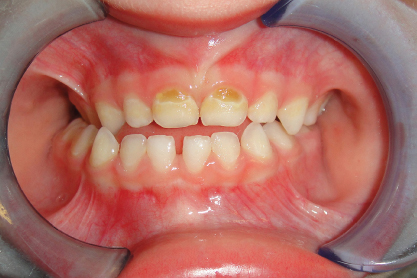Chapter 1
Interim therapeutic restoration in the primary dentition
Jane A. Soxman
Interim therapeutic restoration (ITR) may be the procedure of choice for restoration in uncooperative children, young children, or children with special needs when definitive restorative treatment cannot be performed. ITR avoids the use of sedation or general anesthesia until a child is old enough to cooperate or curtails caries progression and/or emergency care, while awaiting availability of sedation or general anesthesia services (Kateeb et al., 2013).
Indications
Alterative/atraumatic restorative technique (ART) is performed with similar indications and techniques as ITR; however, ART restorations have been traditionally placed where people have limited ability to obtain dental treatment and without a plan for future replacement (American Academy of Pediatric Dentistry, 2014a; AAPD Reference Manual, pp. 48–49). ART was first introduced 26 years ago in Tanzania and has developed into an accepted protocol for caries management to improve quality and access to dental treatment over the world (Frencken et al., 2012). Mahoney et al. (2008) state that ART should be used only when the restoration can be periodically evaluated to insure integrity of the restoration.
ITR is minimally invasive and includes only asymptomatic primary incisors or molars with lesions confined to dentin with sound enamel margins, along with a plan for future follow-up and final restoration (Amini & Casamassimo, 2012). Two surfaces may be treated, but the use of a matrix and rubber dam increases the complexity of the procedure, and the longevity of a multisurface glass ionomer restoration is reduced compared to a one-surface restoration. Survival rates over the first 2 years of 93% for single surface and 62% for multiple surface primary molar restorations are reported (de Amorim et al., 2012). Carious lesions ideal for ITR are mesial caries on maxillary incisors, facial caries, cervical caries, and occlusal caries in the primary dentition (Figures 1.1–1.4).

Figure 1.1 Mesial caries maxillary primary central incisors.

Figure 1.2 Facial caries maxillary primary central incisors.
Stay updated, free dental videos. Join our Telegram channel

VIDEdental - Online dental courses


